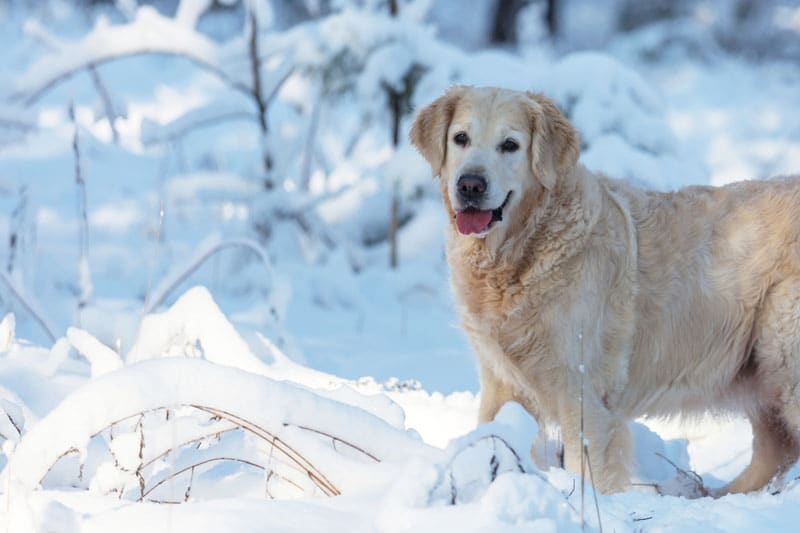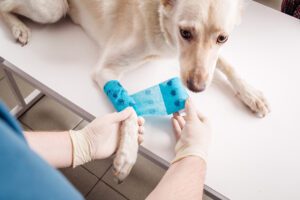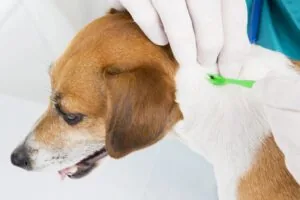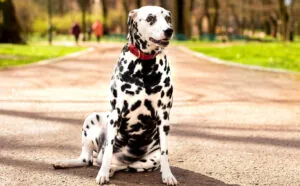Pet Winter Safety

Many pets love to be outdoors, but the cold, wet, and windy conditions of winter can be dangerous, or even fatal if pets are kept outside for too long. By understanding the hazards of winter weather and how long to stay outside safely, however, every pet owner can help their cats and dogs enjoy time outside without unmanageable risk.
Dangers of Staying Out Too Long
Even on a sunny winter day that may seem mild and balmy in comparison to blizzards or ice storms, there are risks for pets that may be outdoors for too long. If a pet is exposed to wintery conditions, they are at risk for hypothermia and frostbite. Sharp bits of ice can cause cuts that may become infected, while ice can build up on a pet’s fur and cause them to get even colder. Cracked, chapped paws can also get infected and may lead to lameness or more severe illnesses, or pets could pick up toxic salts, de-icers or antifreeze compounds on their paws and fur, which can be poisonous if ingested as the pet grooms itself.
Antifreeze
Antifreeze can leak from a car radiator on the ground. Some animals are unfortunately attracted to this due to the sweet smell and taste. This chemical is absorbed very rapidly once ingested. There is a narrow margin of safety when animals ingest this liquid and small amounts can lead to permanent damage to the kidneys. If a pet is suspected to have been exposed to Antifreeze it is imperative that this pet be taken to a vet immediately for treatments.
Ice Melts
Most ice melts contain large amounts of sodium salts. Some ice melts can cause damage to the paw pads when stepped on. These can get stuck in the paws and cause redness, cracking, or chapping. Ingestion of these melts can cause mild to severe toxicity resulting in upset stomach, vomiting, and neurologic signs (trouble walking, muscle tremors, or seizures). There are “pet-friendly” ice melts that may help to minimize the chance of an injury or toxicity. Also, try to wash your pet’s paws off when they come in from outside.
Pets That Tolerate Cold Longer
Some pets can tolerate being outdoors in cold conditions better than others. While each pet’s tolerance levels will vary, in general larger, more robust pets can better hold their body heat, and pets with thicker fur coats are better equipped to deal with winter weather and colder temperatures. Pets that may be pregnant, very young, very old or that suffer from other health conditions are more fragile and should not be exposed to winter weather for any long periods. Pets that are more active – such as taking a brisk walk or playing a rousing game – can stay outdoors for longer before coming overly chilled, and if the pet is in a sheltered location, it may also be able to be outdoors for longer periods.
How Long to Stay Outside
There are no hard and fast rules for how long pets should stay outdoors in winter, though no pets should be left outdoors all the time when winter is at its worst. Pet owners should carefully supervise their pets when they are outside, watching for signs of discomfort. When the pet is shivering, trying to burrow into shelter or acting anxious and upset, they are too cold and need to be taken indoors. Pets that begin to limp or show lameness or other problems should also be taken indoors right away to take care of any injuries or other problems before they are exacerbated by the cold.
Stray Cats and Cars
When starting your car after a quick trip to the store or from your garage it is best to bang on the hood or honk the horn of the car to scare away any stray sleepers. An outdoor cat or stray cat may find a warm car engine a great place to take a nap. If the car is started while a feline is under, this could cause injuries or death once the fan belt starts moving. Beware of cats sheltering under cars. In cold weather, cats will seek shelter anywhere they can. Even if you haven’t run your car in days, a cat may still seek the nominal protection found in your car’s engine compartment.
In general, when a human pet owner is getting uncomfortable outside, it is fair to say the pet is also uncomfortable and it is time to go inside. Remember, you may be wearing multiple layers of cold weather gear and insulated clothes, but your pet is only protected by its own body and fur coat, which may not be adapted to the harshness of the winter conditions. Short walks and play periods can be suitable, but once your pet is getting cold, it’s time to head indoors and enjoy some warmer fun.
Share This Post
Recent Posts
About Shallowford Animal Hospital
Shallowford Animal Hospital and The Pet Spa at Shallowford are dedicated to the exceptional, compassionate care your pet deserves. Pets hold a very special place in our families, and we treat yours like our own.



